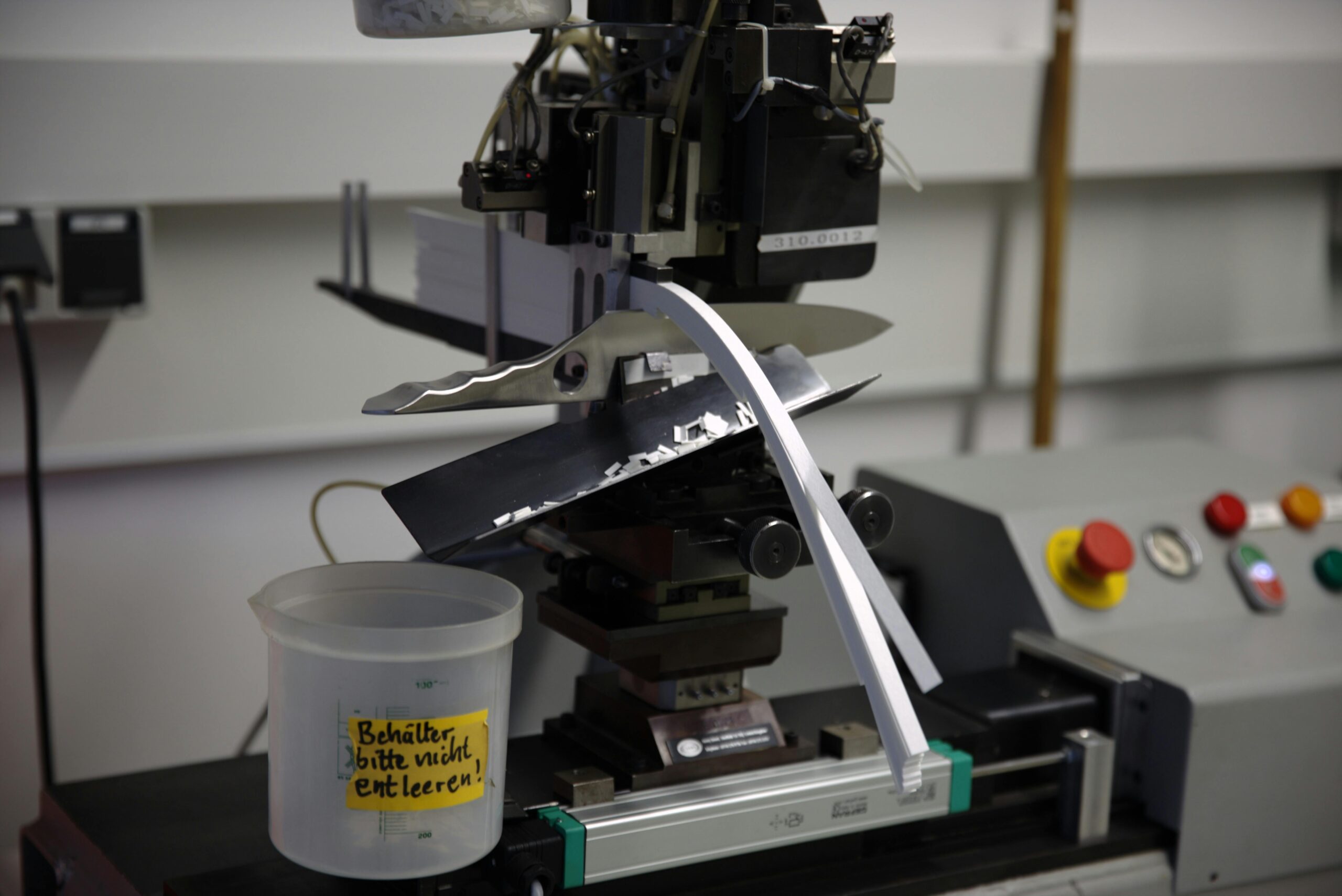The tissue manufacturing industry stands at a critical juncture where quality, consistency, and efficiency define market leadership. Excellence in production isn’t just about machinery—it’s about implementing robust standardization practices and unwavering quality control measures that ensure every product meets exacting specifications.
From facial tissues to industrial paper products, manufacturers face increasing pressure to deliver superior quality while maintaining cost-effectiveness. This delicate balance requires a comprehensive approach that integrates modern technology, skilled workforce development, and systematic quality assurance protocols that transform good manufacturing practices into exceptional ones.
🎯 The Foundation of Manufacturing Excellence
Standardization in tissue manufacturing creates the blueprint for consistent, high-quality production. It establishes uniform processes across production lines, reducing variability and ensuring that each roll, sheet, or box meets predetermined specifications. This systematic approach minimizes waste, optimizes resource utilization, and builds consumer trust through reliability.
Quality control excellence complements standardization by providing the verification mechanisms that ensure standards are met consistently. Together, these elements form an inseparable partnership that drives manufacturing success in an increasingly competitive global marketplace.
Understanding the Tissue Manufacturing Landscape
The tissue paper industry encompasses diverse product categories, each with unique quality requirements. Facial tissues demand softness and strength, bathroom tissue requires specific dissolution properties, and industrial towels need enhanced absorbency and durability. Standardization must account for these varying specifications while maintaining efficiency across production lines.
Modern tissue manufacturing facilities operate sophisticated equipment capable of producing thousands of tons annually. However, equipment alone cannot guarantee quality. The integration of standardized operating procedures, real-time monitoring systems, and comprehensive quality control protocols creates the framework for sustained excellence.
📊 Implementing Robust Standardization Protocols
Effective standardization begins with documentation. Standard Operating Procedures (SOPs) must clearly define every critical step in the manufacturing process, from raw material handling to final packaging. These documents serve as training tools, reference guides, and audit materials that ensure consistent execution regardless of shift, operator, or production line.
Key Elements of Production Standardization
- Raw Material Specifications: Establishing precise criteria for pulp quality, moisture content, and fiber characteristics ensures consistency from the production start
- Process Parameters: Defining temperature ranges, pressure settings, speed controls, and chemical dosages creates reproducible conditions
- Equipment Calibration: Regular calibration schedules maintain machinery accuracy and prevent drift from optimal settings
- Environmental Controls: Humidity, temperature, and cleanliness standards protect product quality and process stability
- Changeover Procedures: Standardized protocols for switching between product types minimize downtime and contamination risks
The Role of Process Mapping
Comprehensive process mapping visualizes the entire production flow, identifying critical control points where quality can be monitored and adjusted. This visual representation helps operators understand their role in the larger system and highlights dependencies between different production stages.
Process maps also serve as problem-solving tools. When quality issues arise, manufacturers can trace backwards through the production flow to identify root causes and implement corrective actions that prevent recurrence.
🔬 Quality Control Systems That Drive Excellence
Quality control in tissue manufacturing operates on multiple levels, from incoming material inspection to final product testing. Each level serves specific purposes and contributes to the overall quality assurance framework that protects both brand reputation and consumer satisfaction.
Laboratory Testing and Analysis
Modern quality control laboratories employ sophisticated testing equipment to measure critical product attributes. Tensile strength testing ensures tissues can withstand normal use without tearing. Absorbency testing verifies moisture-handling capabilities. Softness measurement quantifies tactile properties that influence consumer preferences.
These tests generate quantitative data that enables statistical process control. By tracking results over time, quality teams can identify trends, predict potential issues, and adjust processes before defects occur. This proactive approach transforms quality control from reactive problem-solving to preventive quality assurance.
In-Line Monitoring and Real-Time Adjustments
Advanced tissue machines incorporate sensors and monitoring systems that provide continuous feedback on production parameters. Basis weight scanners, moisture analyzers, and vision systems detect variations instantly, enabling immediate corrective action before significant quantities of off-specification product are produced.
Integration of these monitoring systems with automated control systems creates closed-loop quality management. When parameters drift outside acceptable ranges, the system automatically adjusts settings to restore optimal conditions, reducing reliance on human intervention and minimizing quality variation.
💡 Technology Integration for Quality Enhancement
Digital transformation revolutionizes tissue manufacturing quality control. Manufacturing Execution Systems (MES) collect data from multiple sources, providing comprehensive visibility into production performance. This data enables sophisticated analysis that reveals patterns invisible to traditional monitoring approaches.
Data Analytics and Predictive Quality
Machine learning algorithms analyze historical production data to identify correlations between process variables and quality outcomes. These insights enable predictive models that forecast quality issues before they manifest, allowing preemptive adjustments that maintain consistent output.
Predictive maintenance applications monitor equipment condition, scheduling maintenance activities based on actual wear rather than arbitrary time intervals. This approach reduces unexpected breakdowns that disrupt production and compromise quality while optimizing maintenance resource allocation.
Quality Management Software Solutions
Dedicated quality management systems centralize quality data, standardize workflows, and automate reporting. These platforms track non-conformances, manage corrective and preventive actions, and maintain audit trails that demonstrate compliance with regulatory requirements and customer specifications.
Digital documentation replaces paper-based systems, improving accessibility and reducing errors associated with manual data entry. Electronic signatures and timestamps create accountability while streamlining approval processes that historically created bottlenecks in quality operations.
👥 Building a Quality-Focused Culture
Technology and procedures provide the framework for quality excellence, but people execute these systems. Cultivating a quality-focused organizational culture ensures that every team member understands their role in maintaining standards and feels empowered to identify and address quality concerns.
Training and Competency Development
Comprehensive training programs ensure operators understand not just what to do, but why specific procedures matter. This deeper understanding promotes engagement and encourages operators to identify improvement opportunities rather than simply following instructions mechanically.
Cross-training creates versatile teams capable of maintaining production quality across different lines and shifts. This flexibility proves invaluable during absences or production changes while building broader organizational quality knowledge that strengthens overall capability.
Empowerment and Accountability
Quality excellence requires empowering frontline workers to stop production when quality issues arise. This authority demonstrates organizational commitment to quality over short-term output targets and encourages proactive problem identification before minor issues escalate into major defects.
Clear accountability structures ensure quality responsibilities are understood and accepted throughout the organization. From executive leadership to machine operators, each level must embrace their role in the quality system and recognize how their actions impact final product integrity.
📈 Measuring and Improving Quality Performance
Continuous improvement forms the cornerstone of sustained quality excellence. Regular measurement of key performance indicators provides objective evidence of quality system effectiveness and identifies opportunities for enhancement.
Critical Quality Metrics
| Metric | Purpose | Target Impact |
|---|---|---|
| First Pass Yield | Measures production meeting specifications without rework | Reduce waste and increase efficiency |
| Customer Complaint Rate | Tracks quality issues reaching consumers | Enhance customer satisfaction |
| Process Capability Indices | Quantifies process consistency and specification compliance | Ensure consistent quality output |
| Quality Cost Ratio | Measures quality-related expenses versus production value | Optimize quality investment |
| Defect Detection Rate | Evaluates inspection system effectiveness | Prevent defective product release |
Root Cause Analysis and Corrective Action
When quality issues occur, systematic root cause analysis prevents recurrence. Methodologies like Five Whys, Fishbone Diagrams, and Failure Mode Effects Analysis help teams move beyond symptoms to identify underlying causes that, when addressed, eliminate problems permanently.
Effective corrective action systems track issues from identification through resolution, ensuring actions are implemented and verified. This closed-loop approach prevents quality problems from recurring and builds institutional knowledge that strengthens the overall quality system.
🌍 Regulatory Compliance and Industry Standards
Tissue manufacturers must navigate complex regulatory landscapes that vary by region and product application. Food-contact tissues face stringent safety requirements. Medical-grade products require validated sterilization processes. Understanding and meeting these requirements protects both consumers and business interests.
International Quality Standards
ISO 9001 certification demonstrates commitment to quality management systems that meet international benchmarks. This certification requires documented procedures, regular audits, and continuous improvement initiatives that align perfectly with standardization and quality control objectives.
Industry-specific standards provide additional guidance for tissue manufacturers. These standards address unique challenges in tissue production, offering best practices developed through collective industry experience and research.
Audit Readiness and Documentation
Maintaining audit-ready documentation ensures regulatory compliance and facilitates customer approvals. Comprehensive records demonstrating adherence to standards, traceability throughout production, and systematic quality control create confidence among regulators, customers, and consumers.
Regular internal audits prepare organizations for external scrutiny while identifying improvement opportunities. These audits verify that documented procedures reflect actual practices and that quality systems function as designed.
🚀 Innovation and Future Quality Trends
The tissue manufacturing industry continues evolving, driven by technological advancement and changing consumer expectations. Staying current with emerging trends positions manufacturers for continued quality leadership in increasingly competitive markets.
Sustainable Quality Practices
Environmental sustainability increasingly influences quality standards. Consumers demand products manufactured responsibly, using sustainable materials and minimizing environmental impact. Quality systems must expand to encompass environmental performance alongside traditional product quality metrics.
Sustainable practices often enhance traditional quality outcomes. Improved resource efficiency reduces waste while lowering costs. Renewable materials can offer performance advantages alongside environmental benefits. Integrating sustainability into quality frameworks creates competitive advantages that resonate with environmentally conscious consumers.
Artificial Intelligence and Advanced Analytics
AI applications in quality control continue advancing, offering capabilities that surpass human and traditional automated systems. Computer vision systems detect subtle defects invisible to human inspectors. Neural networks identify complex patterns in production data that reveal optimization opportunities.
These technologies augment rather than replace human expertise. Quality professionals focus on strategic decision-making and system improvement while AI handles routine monitoring and data analysis, creating partnerships that leverage the strengths of both human intelligence and artificial intelligence.
🎓 Lessons from Industry Leaders
Leading tissue manufacturers share common characteristics in their approach to quality and standardization. They invest heavily in workforce development, recognizing that skilled, engaged employees execute quality systems most effectively. They embrace technology while maintaining focus on fundamental quality principles that transcend specific tools or platforms.
These organizations view quality as strategic advantage rather than cost center. They understand that reputation for consistent excellence commands premium positioning and customer loyalty that provides competitive insulation in commodity-driven markets.
Creating Competitive Advantage Through Quality
Superior quality enables differentiation in markets where products might otherwise appear interchangeable. Consumers recognize and reward consistent quality, developing brand preferences that drive repeat purchases and positive word-of-mouth promotion more effective than traditional advertising.
Business customers particularly value reliable quality that enables their own operations to run smoothly. Industrial tissue users depend on consistent product performance that prevents disruptions. This reliability becomes the foundation for long-term partnerships that provide stable revenue streams and collaborative improvement opportunities.

✨ The Path Forward: Commitment to Excellence
Mastering perfection in tissue manufacturing requires unwavering commitment to standardization and quality control excellence. This commitment manifests through systematic procedures, advanced technology, skilled workforce, and organizational culture that prioritizes quality in every decision and action.
The journey toward excellence never concludes. Markets evolve, technologies advance, and consumer expectations rise continuously. Organizations embracing continuous improvement and maintaining flexibility while adhering to fundamental quality principles position themselves for sustained success regardless of industry changes.
Investment in quality systems generates returns that extend beyond immediate cost savings or defect reduction. Enhanced reputation, customer loyalty, operational efficiency, and workforce pride create value that compounds over time, building organizational capabilities that become increasingly difficult for competitors to replicate.
The tissue manufacturing industry’s future belongs to organizations that master the integration of standardization and quality control. These manufacturers will lead markets, set industry benchmarks, and demonstrate that excellence in basic products matters as much as innovation in complex technologies. Through disciplined execution of quality fundamentals, they transform tissue manufacturing from commodity production into precision craft that deserves recognition as manufacturing excellence.
Toni Santos is a biotechnology storyteller and molecular culture researcher exploring the ethical, scientific, and creative dimensions of genetic innovation. Through his studies, Toni examines how science and humanity intersect in laboratories, policies, and ideas that shape the living world. Fascinated by the symbolic and societal meanings of genetics, he investigates how discovery and design co-exist in biology — revealing how DNA editing, cellular engineering, and synthetic creation reflect human curiosity and responsibility. Blending bioethics, science communication, and cultural storytelling, Toni translates the language of molecules into reflections about identity, nature, and evolution. His work is a tribute to: The harmony between science, ethics, and imagination The transformative potential of genetic knowledge The shared responsibility of shaping life through innovation Whether you are passionate about genetics, biotechnology, or the philosophy of science, Toni invites you to explore the code of life — one discovery, one cell, one story at a time.




